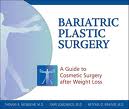
Interestingly, it is not currently known how often the massive weight loss patient who has had gastric bypass or banding go on to undergo body contouring surgery. A recent issue of the journal Obesity Surgery reports on just that issue. Patients (250 in number) who had undergone gastric bypass surgery between 2003 and 200- returned a questionnaire which obtained information on body image satisfaction and frequency of body contouring surgery after massive weight loss. Perhaps surprising to some, the study found that the majority (75%) but not all desired body contouring after their surgery. Of this group, fifty-three patients (21%) had undergone a total of 61 body contouring procedures. The most common body contouring procedure was a tummy tuck/panniculectomy and lower body lifts.This study illustrates the significant disparity between the number of massive weight loss patients who want a body contouring surgery and those who actually received it. This small study showed that only about 20% of patients have some form of bariatric plastic surgery. No one will really ever know what the percentage is nationally, but it would not surprise me that this number is fairly accurate. The simple reason is economics. These extensive plastic surgeries are expensive and insurance does not cover many of them. While almost all massive weight loss patients expect insurance to cover the removal of their resultant hanging skin after their bariatric surgery, it is disappointing when they find out that it largely isn’t so.
Why doesn’t insurance cover many bariatric plastic surgeries? Because it has to have a proven medical benefit to do so. Just because there is too much skin and it hangs and doesn’t look good is not deemed medically necessary. The most common medical benefit to justify coverage of surgery is that it must improve dermatitis and skin infections. Generally only an abdominoplasty fulfills that medical criteria. This eliminates coverage for necklifts, armlifts, any form of breast reshaping, back lifts, and thigh lifts.
It is also no surprise that the most common body contouring procedure that is done is a tummy tuck or an abdominoplasty. This is largely driven by insurance coverage. Removal of a pannus or skin apron that hangs over the waistline is deemed medically beneficial in many cases. As a result, it is the one bariatric plastic surgery procedure that gets done first to those massive weight loss patients surgically inclined.
Dr. Barry Eppley
Indianapolis, Indiana


